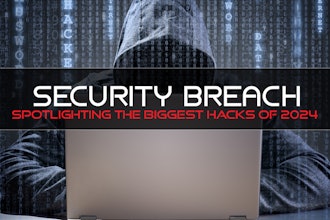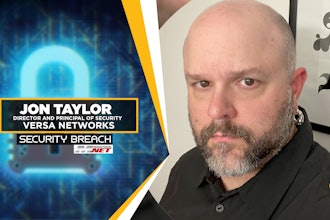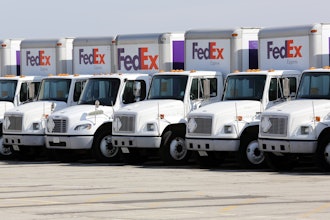Not all operating environments are the same and the differences in a location's environmental characteristics can have a significant impact on how lighting equipment performs. Differences in humidity, wetness, and temperature ranges, the presence of corrosives, and the presence of flammable or explosive gases and vapors can pose a serious challenge for electrical lighting. Damp and wet areas, although they are similar, represent different challenges and are not interchangeable in meaning. As a result, fixtures must be specifically designed and approved for use according to the type of environment it will encounter.
If an area will expose a fixture to high humidity or condensation buildup, then it is considered a damp location. If an area will expose a fixture to direct contact with water, either as mist, light spray, or water under pressure such as from jets or nozzles, then it is considered a wet location. If lighting is to be installed in these types of environments it must carry approvals from accepted independent third party testing laboratories that have ensured the fixtures adhere to the guidelines set forth in the National Electrical Code, or NEC for short. Fixtures approved for wet locations may be used indoors or outdoors in locations that experience wet, dry, or damp conditions. Fixtures approved for damp locations can be used indoors or outdoors in locations that only experience dry or damp conditions.
Closely following wet or damp environments are corrosive environments. These are locations where fumes, vapors, and materials may be present that can corrode fixtures the related hardware associated with them. Fixtures designed for use in corrosive environments may or may not be wet or damp rated as well, but usually when damp or wet rated have been specifically designed for use in marine locations where the salt from the ocean presents corrosive as well as wetness issues. Light fixtures intended for use in corrosive environments, like wet or damp fixtures, must also carry approvals from accepted testing laboratories following guidelines as set forth in the NEC. These fixtures can be constructed of materials that resist or cannot corrode, or may also be specially coated and sealed to prevent corrosion.
Hazardous Environments
Hazardous environments represent locations where the potential for fire or explosion exists due to the presence of flammable gases, vapors, combustible dusts, or larger debris such as wood chips and machining flyings. Hazardous locations present some of the greatest challenges to lighting equipment due to the severity of the issues they present. There are numerous instances of explosions and fires which have ended in serious worker injuries and deaths due to accidental ignition of flammable materials. As a result, the guidelines and regulation of lighting equipment intended for use in hazardous locations is detailed and complex. Needless to say, any electrical equipment, including lighting, must be approved by an accepted testing body and meet the requirements set forth in sections 500-501 of the NEC.
Hazardous locations are classed according to the general type of materials to be encountered, the likelihood of exposure, and finally the specific gases, vapors or materials. A Class 1 location is an area where gases or vapors are encountered. A Class 2 location is an area where combustible or conductive dusts are encountered. Division 1 refers to these materials being present as a normal part of operations. Division 2 refers to the occasional presence of these materials due to abnormal conditions such as a leak or spill. Groups refer to the specific types of materials to be encountered. Groups A through D refer to gases and vapors and are arranged according to the ignition temperature and explosive potential of the gases or vapors. Groups E through G refer to combustible or conductive dusts and are arranged according to electrical conductivity, ignition temperature and explosive potential. Lighting to be used in hazardous locations must meet the classification requirements of the area it is to be used in. Thus, if a location is designated as Class 1 Division 1 and will have petrochemical vapors present, then a Class 1 Division 1 fixture with Group D approval must be used.
It is also important to note that hazardous locations also require fixtures that carry the proper temperature code rating. The Temp Code Rating basically states the maximum operating temperature of the device in question, and this temperature must be lower than the ignition point of the materials to be encountered.
Extreme Temperatures
Another area where problems can arise with lighting equipment is locations where extremes of ambient temperature may be encountered. Some forms of lighting are sensitive to ambient temperatures and adverse effects can occur if lighting is not chosen with this in mind. Fluorescent and HID fixtures in particular are susceptible to extremes of temperature. Fluorescent lights are sensitive to cold temperatures and in areas where very low or freezing temperatures are encountered may exhibit erratic operation such as fluttering, low output, slow startup, and difficulty in starting at all. In some cases it is possible to utilize fixtures with specially designed housings and ballasts which offer improved performance in cold environments, but generally it is better to look for a more robust incandescent or LED alternative that is not affected by cold temperatures.
Locations with extreme high temperatures can pose problems for fixtures which rely on ballasts for operation including HID and fluorescent designs. High ambient temperatures can lead to ballast overheating, causing a process known as cycling where the ballast automatically shuts down during overheating and restrikes the lamp once cooled enough. If the overheating is not corrected this cycling will continue, leading to eventual ballast failure. Fixtures which rely on ballasts should be well ventilated and if possible kept well away from sources of high heat.
Different locations present different operating conditions which can have significant effect on the performance of a light fixture. Hazardous environments pose more serious risks that directly impact workplace safety and require extra attention to fixture certification and approval for such environments. Lighting selection and installation should be performed with these operating conditions in mind in order to extract the optimal safety, performance, and longevity from a fixture.






















